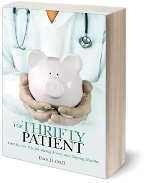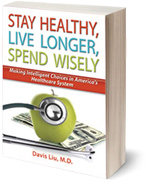ONLINE CALCULATOR for POSITIVE PREDICTIVE VALUE AND NEGATIVE PREDICTIVE VALUE for COVID-19 (SARS CoV-2) Antibody tests
For educational purposes
Consult a clinician for specific details

You need to estimate the prevalence of COVID-19 cases in your community
- 5% is typical in NON COVID-19 hot spots
- 20% is a reasonable estimate for a hot spot like New York City.
CALCULATE HERE for Quest Diagnostics serology test
CALCULATE HERE for your OWN SARS-Cov2 serology test. You need to know the SENSITIVITY and the SPECIFICITY of the test.
Prevalence image from May 21, 2020. Provided by Dr. Scott Gottlieb via Twitter.
SENSITIVITY and SPECIFICITY of TESTS OFFERED AT LEMONAID HEALTH
FDA requirements for EUA testing
Sensitivity must be 90% or better
Specificity must be 95% or better
Quest Diagnostics serology test – FDA EUA
Sensitivity is 90 to 100%
Specificity range is 99 to 100%
Scanwell at home test kit – pending FDA EUA
PENDING
What is the sensitivity of a test? What is the specificity of the test? Why does the prevalence of an illness matter?
SENSITIVITY and SPECIFICITY
In a perfect world, a test would be completely perfect.
A patient with disease or exposure to an illness would always test positive.
A patient WITHOUT disease or exposure to an illness would always test NEGATIVE.
The ability of a test to always identify a patient who has illness is known as SENSITIVITY.
The ability of a test to always identify a patient WITHOUT disease or illness is known as SPECIFICITY.
Example
A test with 90% sensitivity means that if 100 patients with illness are tested the test correctly identifies 90 out of the 100 patients that have illness. 10 patients are falsely identified as negative.
A test with 90% SPECIFICITY means that if 100 patients WITHOUT illness are tested, the test correctly identifies 90 out of the 100 patients as being NEGATIVE as they don’t have illness. However 10 of these patients will test POSITIVE even though they have no illness.
Sensitivity and specificity of a test depending on how important it is not to miss finding someone with a disease or illness.
For example, if you wanted to make sure every patient with HIV is correctly identified on a screening test, you would make sure the test was very high in sensitivity. But the test, might also pick-up a lot people who don’t have HIV but identify them as positive. You accept this possibility in a screening test because you don’t want to miss finding these patients. If the screening test is positive, further or repeat testing is done to confirm.

A real world example is when you go to the airport and you are screened for any weapons by TSA before getting on the flight. To make sure TSA does not miss anyone getting on the plane with possible weapons, they set their sensitivity very high. They don’t want to miss anyone with weapons they set their screening to find people with metal objects. But, that also means they sacrifice specificity. They will find plenty of people with belt buckles, watches, or other metal objects, that aren’t weapons. When someone sets of a detector, further examination is needed (just like further or repeat testing).
EXAMPLE OF SENSITIVITY AND SPECIFICITY
Each test has a sensitivity and specificity.
Let’s take a test which is 90% sensitive and 90% specific.
Let’s assume that out of 1000 people tested that 20% have illness. This means the disease has a 20% prevalence rate.
We know that of the 200 people with illness, the test correctly identifies 90% of them. So 180 people have a Positive + test and have disease.
We also know that 800 people DO NOT have the illness and the test correctly identifies 90% of these patients. 800 patients x 90% = 720 patients who have NEGATIVE – test and have NO disease.
Test / Disease Disease No Disease
Positive + 180 80 260
Negative – 20 720 740
200 800 1000
We can also see that some people who test positive do NOT have disease. And some people who test NEGATIVE, do have disease.
POSITIVE AND NEGATIVE PREDICTIVE VALUE
What are the chances you have disease if you are positive?
Out of all those who test and are positive and have illness (180) divided by all who tested positive (260). So in a community the disease prevalence is 20%, if you test positive, the odds you do have the illness is 180/260 or 67%. This is known as the positive predictive value (PPV).
What are the chances you DO NOT have disease if you are NEGATIVE?
Out of all those who test and are NEGATIVE (720) divided by all who tested NEGATIVE (800). So in a community the disease prevalence is 20%, if you test positive, the odds you DO NOT have the illness is 720/800 or 90%. This is known as the NEGATIVE predictive value (NPV).
SCREENING IN A LOW PREVALENCE ENVIRONMENT
How likely are you to have disease if you are in a population that has a 5% prevalence rate?
That means of 1000 people, only 50 patients have the illness. How good is the same test in determining whether or not you’ve been exposed to the illness?
Let’s take the same test which is 90% sensitive and 90% specific.
We know that of the 50 people with illness, the test correctly identifies 90% of them. So 45 people have a Positive + test and have disease.
We also know that 950 people DO NOT have the illness and the test correctly identifies 90% of these patients. 950 patients x 90% = 855 patients who have NEGATIVE – test and have NO disease.
Test / Disease Disease No Disease
Positive + 45 95 140
Negative – 5 855 860
50 950 1000
Like before, we can also see that some people who test positive do NOT have disease. And some people who test NEGATIVE, do have disease.
POSITIVE AND NEGATIVE PREDICTIVE VALUE
What are the chances you have disease if you are positive?
Out of all those who test and are positive and have illness (45) divided by all who tested positive (140). So in a community the disease prevalence is 5%, if you test positive, the odds you do have the illness is 45/140 or 32%. So in a low prevalence community, if you test positive there is a better change it is a FALSE POSITIVE than a true positive. Only 1 out of 3 times when someone tests positive, they actually have the illness. So although the test didn’t change, depending on the population you screen, the positive predictive value (PPV) of a test can change.
What are the chances you DO NOT have disease if you are NEGATIVE?
Out of all those who test and are NEGATIVE (855) divided by all who tested NEGATIVE (860). So in a community the disease prevalence is 20%, if you test positive, the odds you DO NOT have the illness is 855/860 or 99%. So in a low prevalence community, if you test NEGATIVE, changes are very high that you do not have illness. So although the test didn’t change, depending on the population you screen, the NEGATIVE predictive value (NPV) of a test can change as well.
WHAT DOES THIS MEAN FOR ME?
Read the information and the results provided by your Lemonaid clinician and ask questions if you aren’t sure what the results mean.
Generally speaking, if you come from a community where the prevalence of SARS-CoV-2 or COVID-19 is low, less than 5%, the odds are a POSITIVE test means you probably do NOT have prior exposure and re-testing may be recommended (you have a FALSE POSITIVE). If you are NEGATIVE, odds are you really are NEGATIVE, no prior exposure.
If if you come from a community where the prevalence of SARS-CoV-2 or COVID-19 is high, say like 20% or higher such has hotspots like New York City or you are a healthcare worker taking care of COVID-19 patients regularly, the odds are a POSITIVE test means you probably DO have prior exposure and it is a TRUE POSITIVE. If you are NEGATIVE, odds are pretty high that you are NEGATIVE, no prior exposure.
OTHER IMPORTANT EDUCATIONAL ARTICLES
Just Because You Test Positive for Antibodies Doesn’t Mean You Have Them – In a population whose infection rate is 5 percent, a test that is 90 percent accurate could deliver a false positive nearly 70 percent of the time. (NY Times)
CDC COVID-19 Serology Surveillance Strategy
QUEST SARS-CoV2 Antibody Lab performance
Question 3. How does Quest Diagnostics ensure that the serologic assays are accurate?
Quest Diagnostics ensures that tests offered for SARS-CoV-2 IgG are highly specific and have validated accuracy:
We use laboratory-based immunoassays from manufacturers who have demonstrated robust validation of their kits. Highlights of the manufacturers’ validation include:
Clinical performance of approximately 90% to 100% (assessed as percent agreement of serology results on known COVID-19 PCR positive cases).
Specificity of approximately 99% to 100%. This was assessed by performing cross-reactivity studies utilizing serum samples positive for antibodies to other respiratory viruses, as well as panels of samples from pre-COVID times (2010, 2017, and 2019).4,5
We verify the performance characteristics of the kits by doing CLIA/CAP-required in-laboratory validations using stringent acceptability criteria for precision, reproducibility, accuracy, method comparison, cross-reactivity, and clinical performance before starting patient testing.
Question 9. Is there cross-reactivity between SARS-CoV-2 antibodies and any of the human coronaviruses or SARS-CoV?
Cross-reactions with antibodies against the closely related SARS-CoV and other known human coronaviruses (HKU1, NL63, OC43, or 229E) cannot be completely excluded. However, specificity of the SARS-CoV-2 IgG immunoassays (ELISA and CMIA) is approximately 99%. Manufacturers4,5 tested panels of samples from pre-COVID times (2010, 2017, and 2019), with less than 1% samples showing positive results.These findings suggest that antibodies against SARS-CoV and other coronaviruses are not commonly found in the general public.
 Get important exclusive advice and tips on how to save money while staying healthy.
Get important exclusive advice and tips on how to save money while staying healthy. Learn how to make intelligent choices in America's Healthcare System.
Learn how to make intelligent choices in America's Healthcare System.